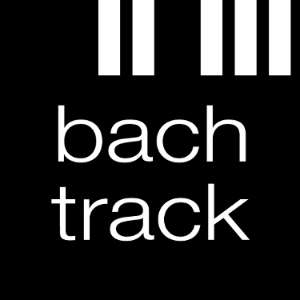The perpetual mystique of Antonio Stradivari shows no sign of abating. There can be few artisans in history that have the sheer cultural staying-power of the luthier of Cremona.
Yet for most of us mortals, the chance to hear these instruments is limited either to recordings, or to the context of a concerto soloist submerged in an orchestral bath. We can hardly be blamed – only around 500 of Antonio Stradivari’s violins have survived to the present day, and a much smaller number of his other string instruments. The ability to hear these instruments live and close up, in a chamber context, especially en masse, is rare.
In London on 19th December those who can get a ticket to Cadogan Hall will be able to do just that. Janine Jansen, in cooperation with violin dealership J&A Beare, presents a chance to hear an all-Stradivari Mendelssohn Octet, alongside other chamber offerings. Joining Jansen will be the Paris-based Quatuor Ébène, as well as violinist Alexander Sitkovetsky, violist Timothy Ridout and cellist Kian Soltani.
The instruments under the fingers of these players are all by Stradivari, dating mostly from the 1690s to the 1710s. In handling such instruments, perhaps even more than the mystique of Cremona are the illustrious players (and owners) they have passed through.
Janine Jansen’s instrument, from 1715, was played by French violinist and composer Pierre Rode (born 1774), a child prodigy and favoured soloist of Napoleon Bonaparte. Beethoven composed his final violin sonata (no. 10, op. 96) for Rode, with its final movement in particular calibrated to his peculiarities as a soloist. Years later, the instrument was owned by the American virtuoso Oscar Shumsky, who recorded all of Rode’s own 24 Caprices on the composer’s personal Stradivarius.
Other players of this instrument include the renowned Hungarian soloist and teacher Leopold Auer, who famously rejected Tchaikovsky’s Violin Concerto when it was already in print. Shumsky’s own teacher, Auer was also the teacher of Jascha Heifetz, Mischa Elman and many other virtuosos.
Alexander Sitkovetsky plays the earliest instrument on display, a violin from 1679. This instrument gains its “Perera” nickname from its 19th century cigar-merchant owner Pedro Ricardo Perera, whose family is otherwise known for inventing lawn tennis. In the 1880s, the instrument was played by the English violinist Emily Shinner, the first woman to study with Joseph Joachim, and in recent years by the Korean American virtuoso Soovin Kim.
Kian Soltani plays a 1698 cello once owned by none other than Luigi Boccherini. A prolific composer – composing at least 27 symphonies and hundreds of chamber works – he was also a celebrated cello soloist, described as “célèbre” by no less a figure than Giacomo Casanova. Patronised by the Infante Don Luis, and later by Lucien Bonaparte and King Wilhelm II of Prussia, Boccherini also had contact with Pierre Rode, allegedly assisting with the orchestration of one of his concertos. But by the 1790s, Boccherini had fallen on hard times, with many of his patrons dying, as well as the tragic early deaths of his daughters and of his second wife.
Boccherini’s story ought to prove sobering for any soloist enjoying a career of fortune and glory. And likewise, the fortunes of the Stradivarius instruments are as fickle and unpredictable as the lives of the musicians who handled them.
Raphaël Merlin, the cellist of Quatuor Ébène, will be playing a Stradivarius cello borrowed from Guy Johnston. Named after its owner Gerald Segelman, it was one of many instruments collected by this mysterious Londoner, known to auction houses as “Mr Black”. Despite his wealth, Segelman was frugal and could often be seen wandering around Berwick Street market with his usual plastic bags of bargain fruits and vegetables.
Notoriously secretive, rumours long persisted that Segelman kept his huge collection of expensive string instruments under beds and on top of wardrobes in his flat on Park Crescent. When he died in 1992, aged 93, the rumours – horrifyingly – turned out to be true. What followed was a veritable bonanza for the string instrument trade, with a certain amount of intrigue to boot.
Yet it is ultimately in the hands of players (and not the occasionally shady string instrument business) in which these instruments come alive. The reputation of the Stradivarius instruments rests not on their immense value or impeccable provenance, but on the virtuosity and grace of their players. For Londoners, this seasonal feast of a concert provides the ultimate in test cases for all Stradivarius gluttons.
This preview was sponsored by J&A Beare.




